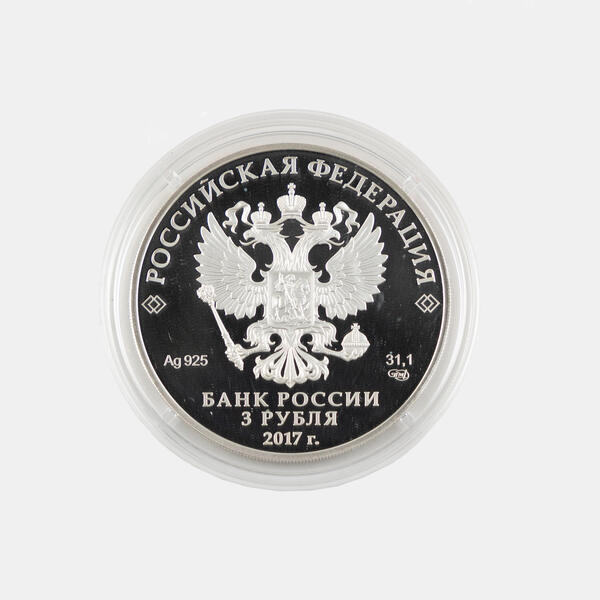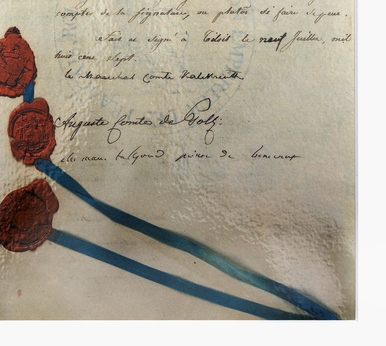On July 5, 2017, the Central Bank issued a commemorative coin with the Queen Louise Bridge in the city of Sovetsk (formerly Tilsit) in the series “Russia’s Monuments of Architecture”. The coin was assigned a denomination of 3 rubles, it is composed of an alloy of sterling silver standard. Its weight is 31.1 grams, circulation — 3000 pieces. On the obverse of the coin there is a relief image of the State Emblem of the Russian Federation, on the reverse — a relief image of the bridge of Queen Louise against the background of the Lithuanian coast.
The Queen Louise Bridge is a border highway bridge over the Neman River connecting the towns of Sovetsk and Panemunė (Lithuania). The construction of the new bridge with a total length of 416 meters began in 1904. The width of the river in the place of the construction was 220 meters. The three-span bridge soon became the crown jewel of the town. The grand opening of the Queen Louise Bridge took place in October 1907 to mark the centenary of the Tilsit Treaties. The monumental structure was designed by a building consultant Kercier and “Boyheld & Co.” from Grünberg. The entrances to the bridge were decorated with beautiful portals.
After the end of World War I, the Queen Louise Bridge became a frontier bridge. For this purpose, a checkpoint and a customs office were built on it. The first “border” period in the bridge’s history lasted until 1939, when the Memel region became part of Germany. In October 1944, in order to delay the advance of the Soviet army, the Wehrmacht engineering units blew up the bridge. The bridge spans and the northern portal were destroyed. In 1947, the Queen Louise Bridge was rebuilt. The original spans were made of wood. In 1965, the bridge became a reinforced concrete structure. The modern bridge was built between 1965 and 1966. During the restoration work, the bas-relief depicting Queen Louise was removed from the preserved southern portal of the bridge and replaced by the coat of arms of the Soviet Union. The date on the portal was changed from 1907 to 1947. The German inscription Königin Luise Brücke (“Queen Louise Bridge”) also disappeared.
With the collapse of the
Soviet Union, the bridge became a border bridge again. In the 1990s, the first
attempts were made to restore the bridge. In March 1995, the Soviet coat of
arms was removed from the portal, and that was the end of the restoration work.
In 2002–2003, large-scale restoration works were carried out, during which all
the lost elements of the portal were reconstructed. The bridge itself was
illuminated.



